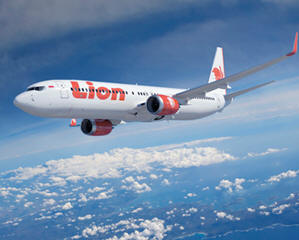|
|||||||||||||||||
|
|
|
|||
|
Boeing Secures
Largest Ever Commercial Airplane Order Worth $22.4 Billion By Eddy Metcalf |
||||
 |
February 15, 2012 - Boeing and Jakarta-based Lion Air
finalized a firm order for 201 737 MAXs and 29
Next-Generation 737-900ERs (extended range). The
agreement, first announced last November in Indonesia,
also includes purchase rights for an additional 150
airplanes.
"The 737 MAX is the best choice for Lion Air and the
best airplane to serve our passengers," said Rusdi
Kirana, Lion Air Founder and President Director. "We're
excited to be the first airline in Asia to fly the 737
MAX and to be the global launch customer of the 737 MAX
9." With orders for 230 airplanes valued at $22.4 billion at list prices, this deal is the largest commercial airplane order ever in Boeing's history by both dollar value and total number of airplanes. Lion Air will also acquire purchase rights for an additional 150 airplanes. |
|||
|
"Lion Air
has been a leader in Indonesia from the very beginning," said
Dinesh Keskar, vice president of Asia-Pacific and India Sales
for Boeing Commercial Airplanes. "Today more people are flying
in Asia at lower fares because of the 737 and this historic 737
MAX order will help connect more people in the future."
To date,
the 737 MAX has orders and commitments for more than 1,000
airplanes from 15 customers and the Next-Generation 737 family
has won orders for more than 6,600 airplanes. Lion Air,
Indonesia's largest private airline, currently operates or has
on order a total of 178 Next-Generation 737s.
The Boeing
737 MAX is a new family of aircraft to replace the Boeing 737
Next Generation family. The primary change will be the use of
the larger and more efficient CFM International LEAP-1B engines.
The airframe is to receive some modifications as well. The 737
MAX is scheduled for first delivery in 2017, 50 years after the
737 first flew.
Airlines
operating the 737 MAX will see a 10-12 percent fuel burn
improvement over today's most fuel efficient single-aisle
airplanes and a 7 percent operating cost per seat advantage over
tomorrow's competition. |
||||


